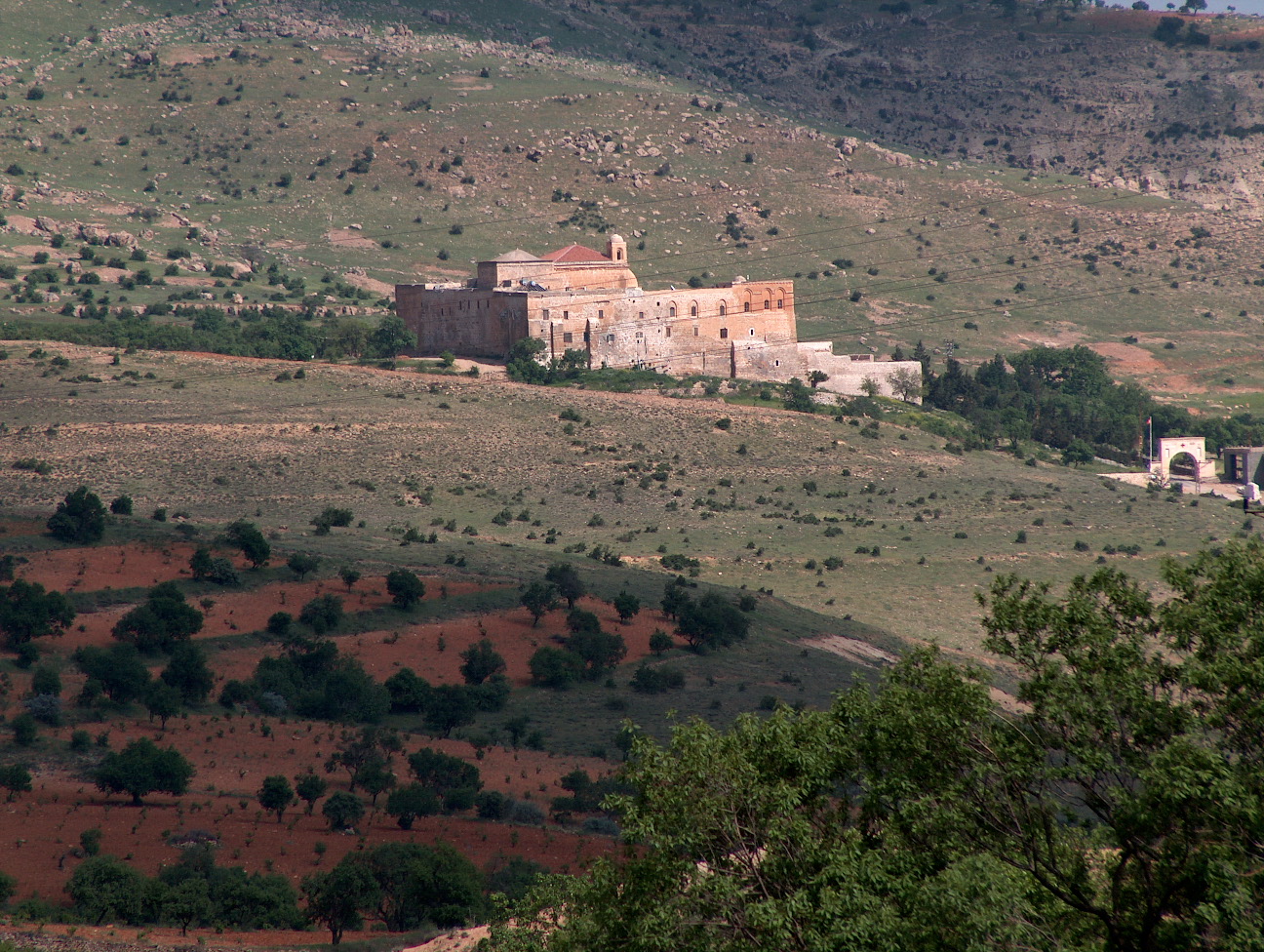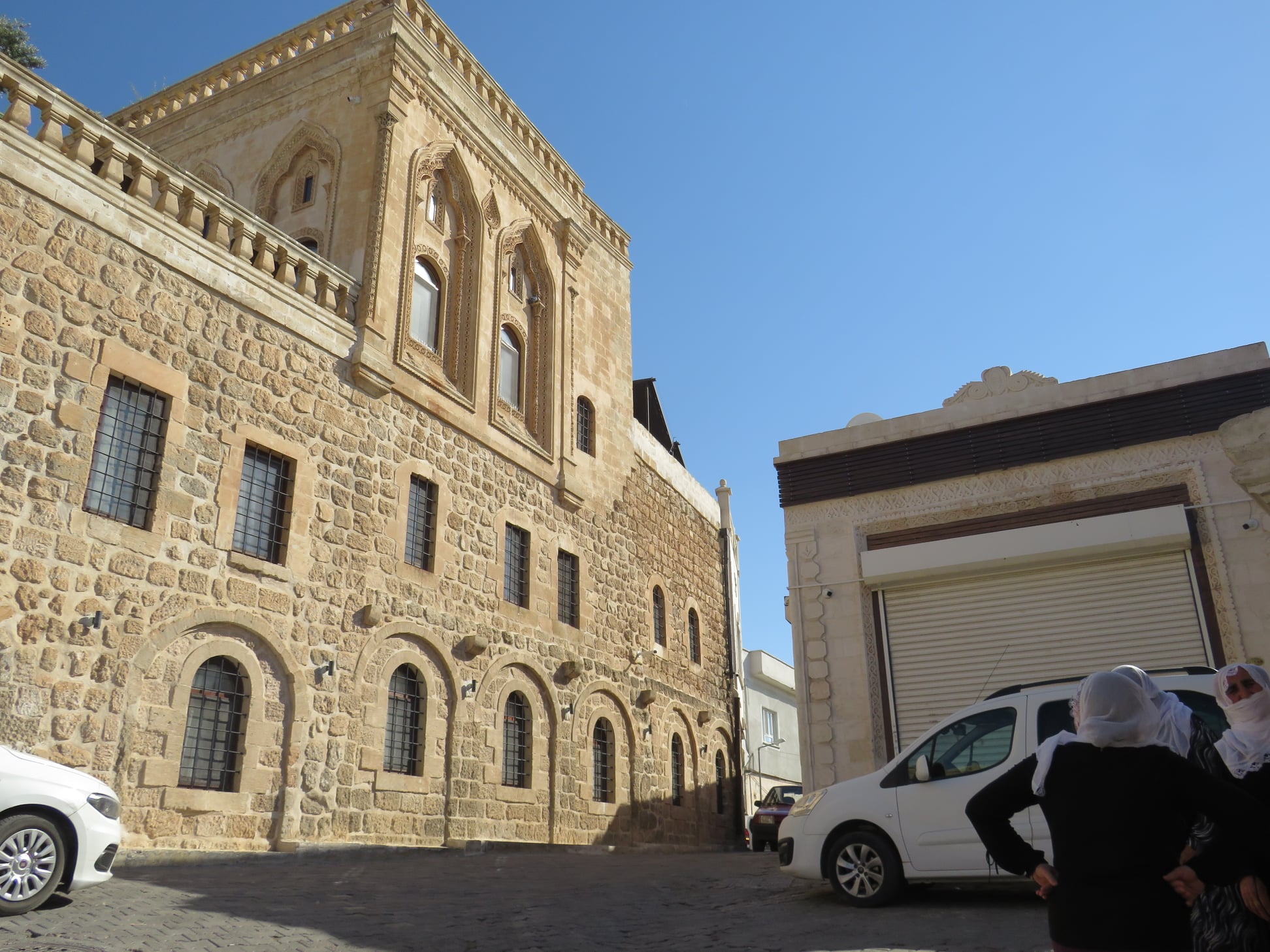|
Abraham Of The High Mountain
Abraham of the High Mountain (died 399) was a teacher of Barsauma. Abraham was not only a monk but a miracle-worker of the monastery of the High Mountain which is located to north of Mount Izla. He founded a monastery near Midyat where the stylite Abel was. Retrieved on 15 Mar 2018 A was dedicated in Abraham's name at Garbia near in . His biography was written by a disciple of his, Stephen. His |
Barsauma Of Nisibis
Barsauma ( syr, ܒܪ ܨܘܡܐ, ''Barṣaumâ''), nicknamed ''Bar Sawma'', "son of Lent" in Syriac, was Metropolitan of Nisibis in the 5th century, and a major figure in the history of the Church of the East. Under his leadership the church moved away from Roman loyalties and became increasingly aligned with the Nestorian movement. Barsauma had been a teacher and student at the School of Edessa, where his mentor had been Ibas, Bishop of Edessa. Barsauma was excommunicated with Ibas and other churchmen for their support of Nestorian teachings, which had been declared heretical at the Council of Ephesus in 431. Though Ibas was acquitted of heresy at the Council of Chalcedon in 451, following his death in 457 his associates found themselves expelled from their positions once again. Barsauma and other of Ibas' followers relocated to the Sasanian Empire. Barsauma became metropolitan of Nisibis, one of the five great archdioceses of the Church of the East. He quickly became a f ... [...More Info...] [...Related Items...] OR: [Wikipedia] [Google] [Baidu] |
Mount Izla
Mount Izla ( syr, ܛܘܪ ܐܝܙܠܐ ''Ṭūr Īzlā' ''),Thomas A. Carlson et al., “Izla — ܛܘܪܐ ܕܐܝܙܠܐ ” in The Syriac Gazetteer last modified January 14, 2014, http://syriaca.org/place/100. also Mountain of Nisibis or briefly in the 9th century Mount Kashyari, is a low mountain or ridge near Nisibis in what once was Sassanid Persia, but is now southeastern Turkey, along the border with Syria. The ridge is the location of dozens of ancient monasteries which were built in the early centuries of Christianity. In modern times, all of the monasteries are in ruins except for that of Mor Melke reconsecrated in the 1930s, Mor Yakub Monastery, founded in in 2012–2013, and the Monastery of Mor Augin which was refounded in 2008 after being abandoned in the 70's. Though called a mountain, it is actually a ridge running from east to west, with a plateau on the northern (Turkey) side, and a plain on the southern (Syria) side. One end of the ridge is Dara, a Roman fort ... [...More Info...] [...Related Items...] OR: [Wikipedia] [Google] [Baidu] |
Midyat
Midyat ( ku, Midyad, Syriac: ܡܕܝܕ ''Mëḏyaḏ'', Turoyo: ''Miḏyoyo'', ar, مديات) is a town in the Mardin Province of Turkey. The ancient city is the center of a centuries-old Hurrian town in Upper Mesopotamia. In its long history, the city of Midyat has been ruled by various different leaders and nations. According to the 1960 population census Midyat was home to 570 Christian households and only 30 Muslim households. Before World War I, Midyat was the only town in the Ottoman Empire with an Assyrian/Syriac majority. The city is populated by Syriac people, Kurds and Mhallami people. Estel neighborhood is about 80 to 85% Kurdish-populated. History The history of Midyat can be traced back to the Hurrians during the 3rd millennium. Ninth century BC Assyrian tablets refer to Midyat as Matiate, or city of caves due to the caves at eleth 3 km away from the city where the earliest inhabitants lived. Many different empires had ruled over Midyat including the Mitannians, ... [...More Info...] [...Related Items...] OR: [Wikipedia] [Google] [Baidu] |
Monastery
A monastery is a building or complex of buildings comprising the domestic quarters and workplaces of monastics, monks or nuns, whether living in communities or alone (hermits). A monastery generally includes a place reserved for prayer which may be a chapel, church, or temple, and may also serve as an oratory, or in the case of communities anything from a single building housing only one senior and two or three junior monks or nuns, to vast complexes and estates housing tens or hundreds. A monastery complex typically comprises a number of buildings which include a church, dormitory, cloister, refectory, library, balneary and infirmary, and outlying granges. Depending on the location, the monastic order and the occupation of its inhabitants, the complex may also include a wide range of buildings that facilitate self-sufficiency and service to the community. These may include a hospice, a school, and a range of agricultural and manufacturing buildings such as a barn, a fo ... [...More Info...] [...Related Items...] OR: [Wikipedia] [Google] [Baidu] |
Tur Abdin
Tur Abdin ( syr, ܛܽܘܪ ܥܰܒ݂ܕܺܝܢ or ܛܘܼܪ ܥܲܒ݂ܕܝܼܢ, Ṭūr ʿAḇdīn) is a hilly region situated in southeast Turkey, including the eastern half of the Mardin Province, and Şırnak Province west of the Tigris, on the border with Syria and famed since Late Antiquity for its Christian monasteries on the border of the Roman Empire and the Sasanian Empire. The area is a low plateau in the Anti-Taurus Mountains stretching from Mardin in the west to the Tigris in the east and delimited by the Mesopotamian plains to the south. The Tur Abdin is populated by more than 80 villages and nearly 70 monastery buildings and was mostly Syriac Orthodox until the early 20th century. The earliest surviving Christian buildings date from the 6th century. In Late Antiquity, the area was part of the Roman Empire's province of Mesopotamia and an important centre of Roman Christianity, called in or . The Tur Abdin was fortified by the emperor Constantius II (), who constructed ... [...More Info...] [...Related Items...] OR: [Wikipedia] [Google] [Baidu] |
Feast Day
The calendar of saints is the traditional Christian method of organizing a liturgical year by associating each day with one or more saints and referring to the day as the feast day or feast of said saint. The word "feast" in this context does not mean "a large meal, typically a celebratory one", but instead "an annual religious celebration, a day dedicated to a particular saint". The system arose from the early Christian custom of commemorating each martyr annually on the date of their death, or birth into heaven, a date therefore referred to in Latin as the martyr's ''dies natalis'' ('day of birth'). In the Eastern Orthodox Church, a calendar of saints is called a ''Menologion''. "Menologion" may also mean a set of icons on which saints are depicted in the order of the dates of their feasts, often made in two panels. History As the number of recognized saints increased during Late Antiquity and the first half of the Middle Ages, eventually every day of the year had ... [...More Info...] [...Related Items...] OR: [Wikipedia] [Google] [Baidu] |
Year Of Birth Missing
A year or annus is the orbital period of a planetary body, for example, the Earth, moving in its orbit around the Sun. Due to the Earth's axial tilt, the course of a year sees the passing of the seasons, marked by change in weather, the hours of daylight, and, consequently, vegetation and soil fertility. In temperate and subpolar regions around the planet, four seasons are generally recognized: spring, summer, autumn and winter. In tropical and subtropical regions, several geographical sectors do not present defined seasons; but in the seasonal tropics, the annual wet and dry seasons are recognized and tracked. A calendar year is an approximation of the number of days of the Earth's orbital period, as counted in a given calendar. The Gregorian calendar, or modern calendar, presents its calendar year to be either a common year of 365 days or a leap year of 366 days, as do the Julian calendars. For the Gregorian calendar, the average length of the calendar year (the mea ... [...More Info...] [...Related Items...] OR: [Wikipedia] [Google] [Baidu] |
406 Deaths
4 (four) is a number, numeral and digit. It is the natural number following 3 and preceding 5. It is the smallest semiprime and composite number, and is considered unlucky in many East Asian cultures. In mathematics Four is the smallest composite number, its proper divisors being and . Four is the sum and product of two with itself: 2 + 2 = 4 = 2 x 2, the only number b such that a + a = b = a x a, which also makes four the smallest squared prime number p^. In Knuth's up-arrow notation, , and so forth, for any number of up arrows. By consequence, four is the only square one more than a prime number, specifically three. The sum of the first four prime numbers two + three + five + seven is the only sum of four consecutive prime numbers that yields an odd prime number, seventeen, which is the fourth super-prime. Four lies between the first proper pair of twin primes, three and five, which are the first two Fermat primes, like seventeen, which is the third. On the other ha ... [...More Info...] [...Related Items...] OR: [Wikipedia] [Google] [Baidu] |





